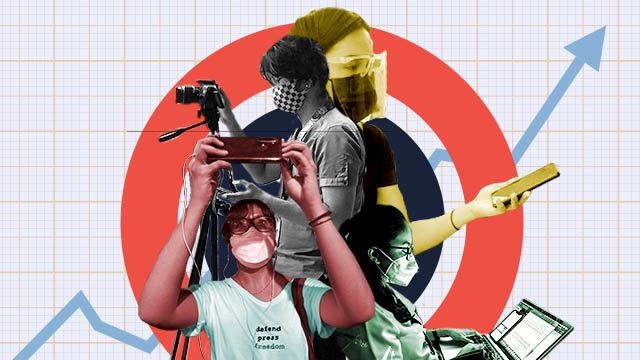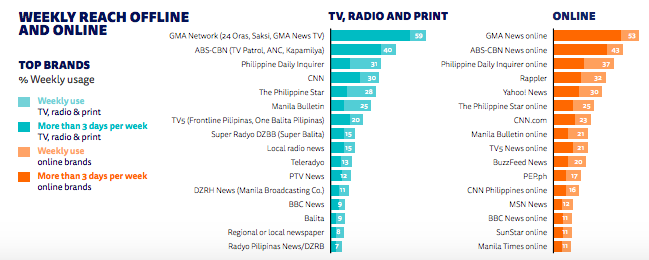SUMMARY
This is AI generated summarization, which may have errors. For context, always refer to the full article.

For the second time in a row, Rappler capped another year with net income, brought about by a robust and diversified revenue stream and timely adjustments in the face of one of the world’s longest lockdowns.
This good news comes as Rappler celebrated on July 25 its 10th year as a registered company. (The website was launched six months later, on January 1, 2012.)
Rappler’s audited 2020 financial statement showed its revenue increased by 50% from the previous year. Thus for the second straight year and despite the harassment suits and threat of a closure, Rappler ended with income and positive EBITDA (earnings before interest, tax, depreciation, and amortization), which is the measure of a company’s financial performance. (Read about 2019, our comeback year here.)
This growth has allowed Rappler to create, hire, and extend more benefits to employees – as well as introduce fellowship programs to journalists based in the provinces and in Southeast Asia as a show of solidarity in these extraordinary times. Even if Rappler has been working from home since March 2020, we managed to keep the office and grow our staff.
“Standing by our values makes for good business,” said Rappler CEO Maria Ressa. “As the world fights against a virus, Rappler called attention to the virus of lies infecting our information ecosystem globally – making the mission of journalism even more important today. Resilience and trust come from facts, a shared reality, and robust communities of action.”
Growth in provinces
While the lockdown derailed Rappler’s coverage last year of news events, particularly sports, travel, and entertainment, our COVID-19 stories reached more Filipinos outside Metro Manila – as proven by the growth of Rappler audiences in all regions outside the National Capital Region, with the biggest jump coming from Central Visayas, Northern Mindanao, and Central Luzon.
The 2021 Digital News Report of the Reuters Institution for the Study of Journalism also showed that Rappler had the 4th widest reach among online news sites in the Philippines, behind the country’s oldest and biggest media organizations such as GMA News, ABS-CBN, and Inquirer. (See table below)
This was despite the sustained attacks against ABS-CBN and Rappler since 2016 – both through disinformation and the use of government resources to silence and demonize the two companies. ABS-CBN was shut down in May 2020, at the height of the pandemic, while the Securities and Exchange Commission issued a closure order against Rappler in January 2018, which Rappler has appealed before the Court of Appeals. (READ: List of cases vs Maria Ressa, Rappler directors, staff since 2018)

The biggest spike in Rappler demographics last year came from the youngest segment, 18-24 years old.
Readers who returned to the site multiple times in a month – what we call Rappler’s brand lovers – also grew the most in 2020. They pushed the readership of Newsbreak, Rappler’s investigative and public trust agenda unit, and Voices, our Opinion section that was relaunched in January 2020.
To address the needs of people stuck in their homes, Rappler introduced a combo of bite-sized, fast breaking videos, and immersive podcasts that tackle diverse topics – from crime to law to food. A trailblazer in this sector, Rappler is among the biggest political and current affairs podcast producers in the country.
All this springs from the key initiatives that Rappler pursued last year:
- Providing meaning to technology. Rappler launched Lighthouse, its new platform to deliver content and engage communities of action. The birth pains notwithstanding, Lighthouse set the stage for the creation of vibrant coalitions on human rights, #CourageON, and the 2022 elections, #WeDecide: Atin ang Pilipinas, which will harness technology for specific campaigns all the way to the May 2022 presidential elections.
- Strengthening communities of action. We pivoted various webinar series that brought together a more diverse audience from the Philippines and abroad, tracking the impact of technology and digital media on society, as well as Rappler’s key advocacies on press freedom – especially in the wake of the ABS-CBN shutdown – and against disinformation. Members of Rappler + were provided more channels of engagement through our editors’ weekly newsletters, which give them a peek into how the newsroom makes its judgment calls; regular Q & A sessions with Rappler journalists; and exclusive briefings from experts. (READ: ABS-CBN’s battle is also ours)
- Supporting partners and their changing needs. The pandemic spared no one, and Rappler made sure to extend its platform, communities, and ideas to corporate clients and non-governmental institutions as they adapted to a new normal. We set up a special section that catered to the concerns of micro, small, and medium enterprises. We engaged frontliners and health workers, amplifying their expertise and learnings from the pandemic.
- Global network against disinformation and for democracy. Rappler has partnered with key research institutions for its organizational goal to combat disinformation. As part of a Participatory Action Research project with the International Center for Journalists and the University of Sheffield, Rappler analyzed nearly 500,000 social media attacks using natural language processing and network analysis. Working with the Massachusetts Institute of Technology, Rappler continues to analyze the impact of disinformation. Among members of the International Fact-Checking Network, Rappler also debunked the first false claim on COVID-19. We exposed the red-tagging of activists on Facebook by groups associated with the police and the military, and their being the target of Chinese influence operations that were already campaigning for Sara Duterte. This led to the takedown of these Facebook pages in September 2020.
- Journalism with context, shining the light. Rappler’s searing report on police abuse and prostituted women amid the pandemic won an award from the Hong Kong-based Society of Publishers in Asia (SOPA). Also recognized by SOPA was the video and animation on Filipino seafarers exiled by the pandemic. Its sustained coverage of COVID-19 focused on “news you can use” as well as explainers that helped clarify conflicting government announcements and chaotic implementation of quarantine rules.
It’s been quite a ride for Rappler – as we turned yet another crisis into opportunity, made possible by readers and partners who have shared with us their own lessons from the pandemic as well as timely feedback that helped us adapt, adjust, and do better.
“Technology has broken trust, and we need to be resilient enough to restore our faith in each other,” Ressa said. “Our struggle today is to remember our shared humanity – to remind ourselves to walk in each other’s shoes.”
As Rappler enters the last half of 2021, it has rolled out the #CourageON: No Lockdown on Rights coalition and coverage of the coming presidential elections, #WeDecide: Atin ang Pilipinas.
We expect the final quarter to be a push of technology and civic engagement – when the Lighthouse platform meets communities of action that will make journalism more meaningful as we shape a better world. – Rappler.com
Add a comment
How does this make you feel?
There are no comments yet. Add your comment to start the conversation.